 Search by Keyword
|
“LITTLE CHILD”
(John Lennon – Paul McCartney)
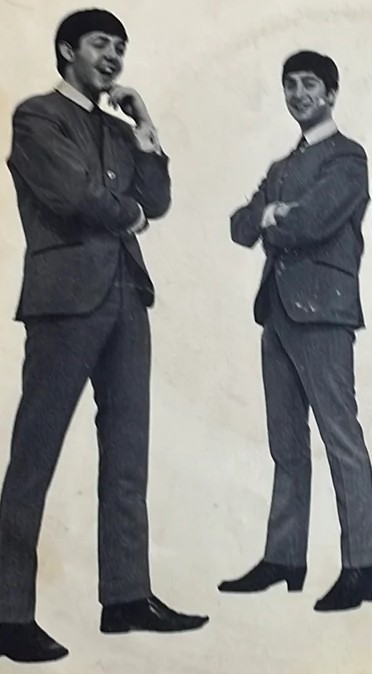 Lennon and McCartney became a prolific songwriting team in the early years of Beatlemania. Their output, individually or collectively, was enormous by today’s standards. But, as they were quick to admit throughout their entire career, they didn’t always write with the same intention. In fact, there were two types of songs that they would write in the early sixties: "hit" songs and "work" songs. Lennon and McCartney became a prolific songwriting team in the early years of Beatlemania. Their output, individually or collectively, was enormous by today’s standards. But, as they were quick to admit throughout their entire career, they didn’t always write with the same intention. In fact, there were two types of songs that they would write in the early sixties: "hit" songs and "work" songs.
"Hit" songs were those they wrote under inspiration with the intention of them becoming popular by The Beatles. John and Paul would labor over these songs, sometimes "eyeball to eyeball," in search of the right chord, melody line or harmony. They would bring them into the studio with brazen confidence that this was the next million-seller for the group.
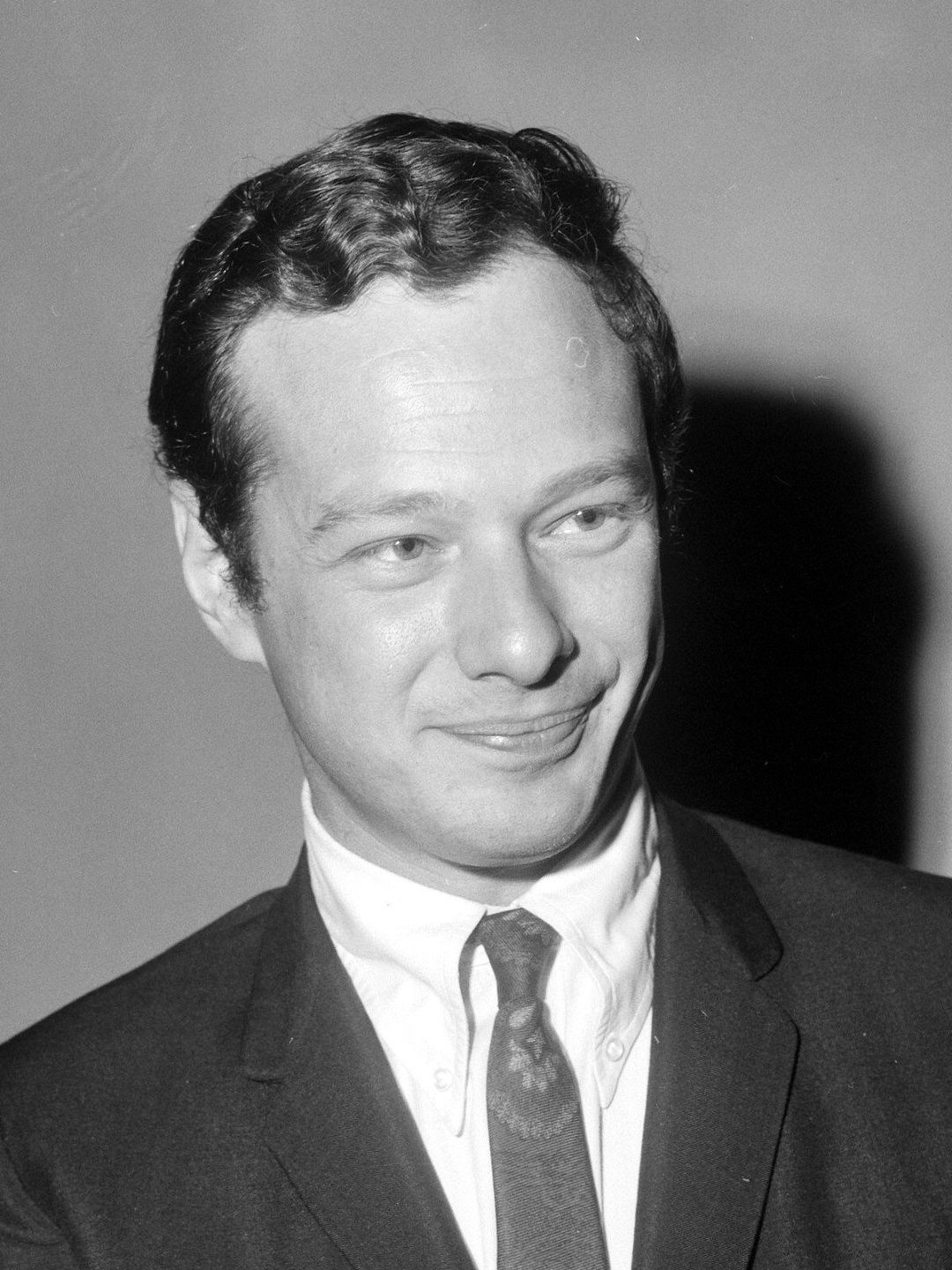 "Work" songs were mostly written for others. From the start, their manager Brian Epstein was encouraging them to write music for other recording artists. He would explain the financial advantage that writing for others would bring to them through royalty payments. Once The Beatles were on the "top of the heap" in Great Britain, he had an ulterior motive: for Lennon and McCartney to write songs for other artists he managed, knowing that anything with the “Lennon / McCartney” name on it would sell, giving Brian a percentage of the other artists' wages as well. Therefore, John and Paul would write what they would call "work" songs for them. They viewed writing these songs as just a job, and cranked them out whenever they had spare time. In the process, they garnered huge British hits for Billy J. Kramer and The Dakotas, The Fourmost and Peter & Gordon amongst others. "Work" songs were mostly written for others. From the start, their manager Brian Epstein was encouraging them to write music for other recording artists. He would explain the financial advantage that writing for others would bring to them through royalty payments. Once The Beatles were on the "top of the heap" in Great Britain, he had an ulterior motive: for Lennon and McCartney to write songs for other artists he managed, knowing that anything with the “Lennon / McCartney” name on it would sell, giving Brian a percentage of the other artists' wages as well. Therefore, John and Paul would write what they would call "work" songs for them. They viewed writing these songs as just a job, and cranked them out whenever they had spare time. In the process, they garnered huge British hits for Billy J. Kramer and The Dakotas, The Fourmost and Peter & Gordon amongst others.
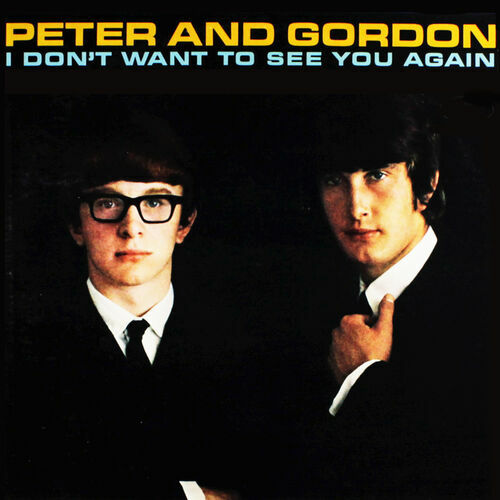 Also included in these "work" songs were ones that they composed for either George or Ringo to sing on Beatles albums, or as last minute fillers to complete an album they were recording. This is where “Little Child” comes in. When Lennon was asked in 1980 about this song, his recollections were that it was written for someone else, "probably Ringo." John's recollections were confirmed by Paul who explained how Ringo refused to sing it. Hence, the song was recorded, with Lennon predominantly singing lead, in order to provide a filler song for their second British album. Also included in these "work" songs were ones that they composed for either George or Ringo to sing on Beatles albums, or as last minute fillers to complete an album they were recording. This is where “Little Child” comes in. When Lennon was asked in 1980 about this song, his recollections were that it was written for someone else, "probably Ringo." John's recollections were confirmed by Paul who explained how Ringo refused to sing it. Hence, the song was recorded, with Lennon predominantly singing lead, in order to provide a filler song for their second British album.
Songwriting History
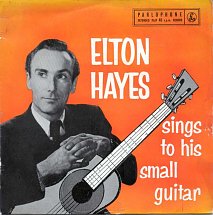 British '50s folk singer Elton Hayes appears to be a partial inspiration for the song “Little Child” according to McCartney. “I nicked a bit of melody from one of his tunes, ‘I’m so sad and lonely,’ that little bit came from a line: ‘Whistle, my love, and I will come to thee, I’ll always find you,” explained Paul, adding “I think it was from a Robin Hood film.” The song was in fact entitled “Whistle My Love” from the 1952 Walt Disney movie “The Story of Robin Hood and his Merrie Men,” which was written by George Wyle and Eddie Pola. British '50s folk singer Elton Hayes appears to be a partial inspiration for the song “Little Child” according to McCartney. “I nicked a bit of melody from one of his tunes, ‘I’m so sad and lonely,’ that little bit came from a line: ‘Whistle, my love, and I will come to thee, I’ll always find you,” explained Paul, adding “I think it was from a Robin Hood film.” The song was in fact entitled “Whistle My Love” from the 1952 Walt Disney movie “The Story of Robin Hood and his Merrie Men,” which was written by George Wyle and Eddie Pola.
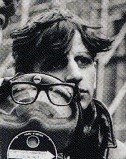 This appears to be the only noteworthy inspiration for the song, which was written with the sole intention of providing a song for Ringo to sing for their second British album. “Certain songs were inspirational and you just followed that” explained Paul, “certain other songs were ‘Right, come on, two hours, song for Ringo for the album.’” This appears to be the only noteworthy inspiration for the song, which was written with the sole intention of providing a song for Ringo to sing for their second British album. “Certain songs were inspirational and you just followed that” explained Paul, “certain other songs were ‘Right, come on, two hours, song for Ringo for the album.’”
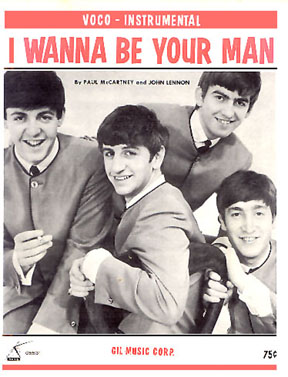 The only prerequisite in writing the song was to make it “fairly simple” for their drummer to sing, as Paul explained: “He didn’t have a large vocal range but he could handle things with good con brio and spirito if they were nice and simple. It had to be something he could get behind. If he couldn’t mentally picture it, you were in trouble.” Apparently, Ringo couldn’t "get behind" this song and passed on it. It's hard to imagine Ringo vocalizing melody lines such as the one that accompanies “I’m so sad and lonely.” What Ringo could "get behind" was more straightforward "beat" style rock and roll tunes, such as his successful interpretation of “Boys” on their first British album "Please Please Me." Therefore, very quickly, John and Paul set out to write a similar sounding song, which resulted in “I Wanna Be Your Man.” The only prerequisite in writing the song was to make it “fairly simple” for their drummer to sing, as Paul explained: “He didn’t have a large vocal range but he could handle things with good con brio and spirito if they were nice and simple. It had to be something he could get behind. If he couldn’t mentally picture it, you were in trouble.” Apparently, Ringo couldn’t "get behind" this song and passed on it. It's hard to imagine Ringo vocalizing melody lines such as the one that accompanies “I’m so sad and lonely.” What Ringo could "get behind" was more straightforward "beat" style rock and roll tunes, such as his successful interpretation of “Boys” on their first British album "Please Please Me." Therefore, very quickly, John and Paul set out to write a similar sounding song, which resulted in “I Wanna Be Your Man.”
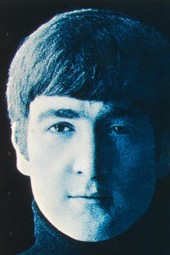 “Little Child” appears to have been written rather quickly (in “two hours”) as a true collaboration between John and Paul, probably favoring Lennon because of his eventually being featured as lead vocalist. This assumption is based on the observation that most Lennon / McCartney songs in their catalog are sung by its primary composer. One lyrical change from the first draft is "if you want someone to have a ravin' time" in the first verse being changed to "if you want someone to make you feel so fine." “Little Child” appears to have been written rather quickly (in “two hours”) as a true collaboration between John and Paul, probably favoring Lennon because of his eventually being featured as lead vocalist. This assumption is based on the observation that most Lennon / McCartney songs in their catalog are sung by its primary composer. One lyrical change from the first draft is "if you want someone to have a ravin' time" in the first verse being changed to "if you want someone to make you feel so fine."
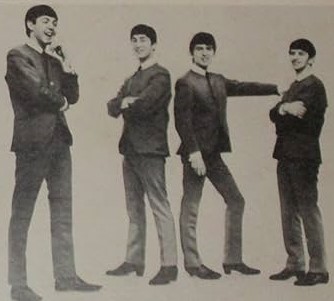 Although nearly a month and a half had transpired since their last EMI recording session, it can be assumed that, because of their hectic touring and television broadcast schedule, the song was not composed until early September 1963, just days before it was recorded. This can also be assumed because of their laborious attempts at recording the song, which stretched through three recording dates and complicated editing sessions. If they had time to perfect the song beforehand, they would probably not have taken so long to record it. Although nearly a month and a half had transpired since their last EMI recording session, it can be assumed that, because of their hectic touring and television broadcast schedule, the song was not composed until early September 1963, just days before it was recorded. This can also be assumed because of their laborious attempts at recording the song, which stretched through three recording dates and complicated editing sessions. If they had time to perfect the song beforehand, they would probably not have taken so long to record it.
Recording History
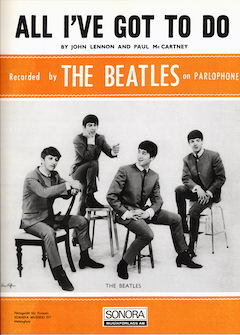 September 11th, 1963, was the first attempt at recording the song. The afternoon session on this day, which ran from 2:30 to 6 pm in EMI Studio Two, saw The Beatles premier three newly written songs. After attempting one take of the newly written “I Wanna Be Your Man,” they ran through two takes of “Little Child” before shelving both songs for another time. Since an attempt at recording "I Wanna Be Your Man" occurred before their first takes of "Little Child," it appears that the group had already determined at this point that the former song would be Ringo's vocal contribution to their second album "With The Beatles," "Little Child" falling to John as lead vocalist. Afterward, they began and completed the excellent new Lennon composition “All I’ve Got To Do.” September 11th, 1963, was the first attempt at recording the song. The afternoon session on this day, which ran from 2:30 to 6 pm in EMI Studio Two, saw The Beatles premier three newly written songs. After attempting one take of the newly written “I Wanna Be Your Man,” they ran through two takes of “Little Child” before shelving both songs for another time. Since an attempt at recording "I Wanna Be Your Man" occurred before their first takes of "Little Child," it appears that the group had already determined at this point that the former song would be Ringo's vocal contribution to their second album "With The Beatles," "Little Child" falling to John as lead vocalist. Afterward, they began and completed the excellent new Lennon composition “All I’ve Got To Do.”
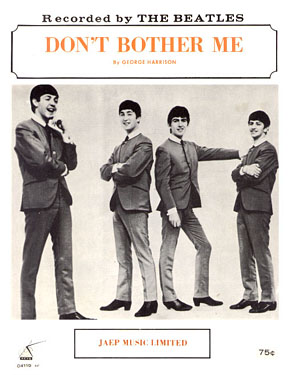 They reconvened in EMI Studio Two the following day, September 12th, 1963, primarily to work on songs they had previously put aside. The evening session, from 7 to 11:30 pm, began with recording their re-worked version of the George Harrison composition “Don’t Bother Me” and then, at approximately between 8 and 10 pm, they resumed work on “Little Child.” Starting with "take three," they ran through at least five full band run-throughs of the song, "take seven" being deemed the best. While the two-track tape was being re-recorded onto a second two-track machine, at least six attempts at recording John's harmonica overdub was recorded onto "take seven," Lennon simultaneously performing his harmonica overdub throughout the entire song, "take 13" being the best. They reconvened in EMI Studio Two the following day, September 12th, 1963, primarily to work on songs they had previously put aside. The evening session, from 7 to 11:30 pm, began with recording their re-worked version of the George Harrison composition “Don’t Bother Me” and then, at approximately between 8 and 10 pm, they resumed work on “Little Child.” Starting with "take three," they ran through at least five full band run-throughs of the song, "take seven" being deemed the best. While the two-track tape was being re-recorded onto a second two-track machine, at least six attempts at recording John's harmonica overdub was recorded onto "take seven," Lennon simultaneously performing his harmonica overdub throughout the entire song, "take 13" being the best.
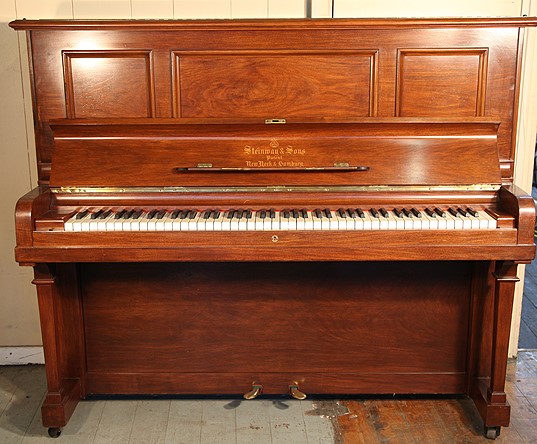 After this, it was also decided that McCartney should record a piano overdub throughout the song. So while "take 13" was again being re-recorded onto yet another two-track machine, Paul simultaneously played piano. This was attempted twice, the second try, now called "take 15," being deemed the best. It appears that a decision was then made to record an acceptable solo section for "Little Child," a twelve-measure full band performance being recorded in at least three additional takes (or from a previously recorded take). While the original two-track tape of this section of the song was being re-recorded onto another two-track machine, it appears that both Paul and John simultaneously recorded their piano and harmonica overdub, at least three attempts at this process being recorded. "Take 18" was considered the best and thereby completed the recording of "Little Child," although it would be returned to later. After this, it was also decided that McCartney should record a piano overdub throughout the song. So while "take 13" was again being re-recorded onto yet another two-track machine, Paul simultaneously played piano. This was attempted twice, the second try, now called "take 15," being deemed the best. It appears that a decision was then made to record an acceptable solo section for "Little Child," a twelve-measure full band performance being recorded in at least three additional takes (or from a previously recorded take). While the original two-track tape of this section of the song was being re-recorded onto another two-track machine, it appears that both Paul and John simultaneously recorded their piano and harmonica overdub, at least three attempts at this process being recorded. "Take 18" was considered the best and thereby completed the recording of "Little Child," although it would be returned to later.
 September 30th, 1963 saw George Martin and engineers Norman Smith and Geoff Emerick make the edit on the song, manually splicing the harmonica/piano solo section of "take 18" into "take 15" in the appropriate place of the song, which was now deemed as complete. This day also saw the first attempt at a mono mix of the song, although this mix was considered unsuitable and was attempted again at a later date. September 30th, 1963 saw George Martin and engineers Norman Smith and Geoff Emerick make the edit on the song, manually splicing the harmonica/piano solo section of "take 18" into "take 15" in the appropriate place of the song, which was now deemed as complete. This day also saw the first attempt at a mono mix of the song, although this mix was considered unsuitable and was attempted again at a later date.
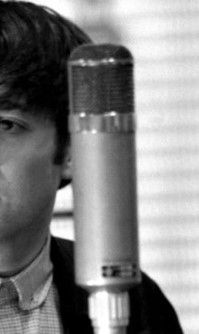 The group convened again for an evening session on October 3rd, 1963, between 7 and 10 pm to add more lead vocals to both “I Wanna Be Your Man” and “Little Child.” With the two-track tape of "take 18" of "Little Child" being re-recorded onto another two-track machine, three attempts at simultaneously overdubbing John and Paul’s vocals for "Little Child" were performed approximately between 9 and 10 pm, "take 21" being considered the best. All in all, it can easily be stated that, undoubtedly because of their unfamiliarity with the song and its proposed arrangement, more recording attention was given to "Little Child" than any other Beatles' song up to this point. The group convened again for an evening session on October 3rd, 1963, between 7 and 10 pm to add more lead vocals to both “I Wanna Be Your Man” and “Little Child.” With the two-track tape of "take 18" of "Little Child" being re-recorded onto another two-track machine, three attempts at simultaneously overdubbing John and Paul’s vocals for "Little Child" were performed approximately between 9 and 10 pm, "take 21" being considered the best. All in all, it can easily be stated that, undoubtedly because of their unfamiliarity with the song and its proposed arrangement, more recording attention was given to "Little Child" than any other Beatles' song up to this point.
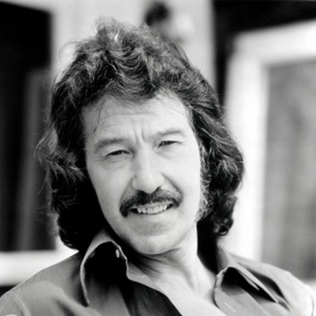 It could easily be assumed that the next mono mix of the song would include the new vocals that were recorded on October 3rd, 1963. This assumption appears to be incorrect. On October 23rd, 1963, George Martin and Norman Smith reconvened to create more mono mixes for The Beatles' upcoming album. They decided, no doubt mistakenly, to create the new mono mix of "Little Child" using the same source tape they had used previously, which was an edit of "take 15" and "take 18." This is the mono mix of the song that appeared on the 1963 British "With The Beatles" album and on all current mono releases worldwide. It could easily be assumed that the next mono mix of the song would include the new vocals that were recorded on October 3rd, 1963. This assumption appears to be incorrect. On October 23rd, 1963, George Martin and Norman Smith reconvened to create more mono mixes for The Beatles' upcoming album. They decided, no doubt mistakenly, to create the new mono mix of "Little Child" using the same source tape they had used previously, which was an edit of "take 15" and "take 18." This is the mono mix of the song that appeared on the 1963 British "With The Beatles" album and on all current mono releases worldwide.
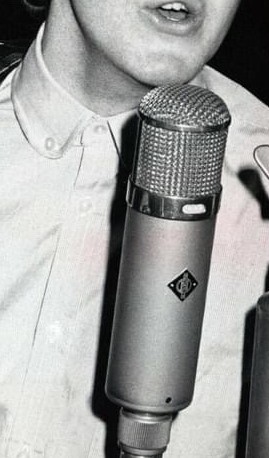 Curiously, on October 29th, 1963, the same EMI staff, along with engineers Geoff Emerick and the mysterious B.T., created the stereo mix of the song using "take 21," which included the new vocal overdubs from October 3rd, 1963. This means that all the vocals on the stereo version of the album, which are primarily heard by themselves in the right channel, have always been different from the officially released mono version, if only slightly. Curiously, on October 29th, 1963, the same EMI staff, along with engineers Geoff Emerick and the mysterious B.T., created the stereo mix of the song using "take 21," which included the new vocal overdubs from October 3rd, 1963. This means that all the vocals on the stereo version of the album, which are primarily heard by themselves in the right channel, have always been different from the officially released mono version, if only slightly.
 What is definitely noticeable on this stereo mix, however, is the awkwardly obvious edits where the solo section of "take 15" fits in with the rest of the song, John's harmonica being panned to the left throughout the song but appearing in the right channel during the solo. Also, John and Paul's original vocals, as sung when the rhythm track was being recorded, can be detected in the left channel, which is especially out-of sync when "c'mon, c'mon, c'mon" is sung in the song's bridges. These flaws are more evidence of how uninterested the EMI staff was with preparing stereo mixes back in the early '60s. In fact, the whole album, all fourteen tracks, received its stereo mix within a three hour session on this day. What is definitely noticeable on this stereo mix, however, is the awkwardly obvious edits where the solo section of "take 15" fits in with the rest of the song, John's harmonica being panned to the left throughout the song but appearing in the right channel during the solo. Also, John and Paul's original vocals, as sung when the rhythm track was being recorded, can be detected in the left channel, which is especially out-of sync when "c'mon, c'mon, c'mon" is sung in the song's bridges. These flaws are more evidence of how uninterested the EMI staff was with preparing stereo mixes back in the early '60s. In fact, the whole album, all fourteen tracks, received its stereo mix within a three hour session on this day.
Song Structure and Style
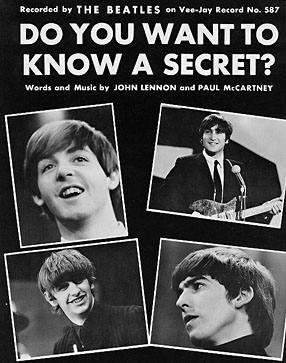 The structure of this song is quite standard fare for the early Lennon / McCartney catalog thus far. Although there are slight differences, one can easily compare “Little Child” to the structure of “Love Me Do” or “Do You Want To Know A Secret” in that its verses are all lyrically identical within the same general framework; something that occurs very infrequently in The Beatles catalog. Nonetheless, we have a standard 'verse/ verse/ bridge/ verse' structure here (or aaba). One difference would be the solo section which uses a different chord pattern not heard elsewhere in the song, followed by another bridge and final verse. The structure of this song is quite standard fare for the early Lennon / McCartney catalog thus far. Although there are slight differences, one can easily compare “Little Child” to the structure of “Love Me Do” or “Do You Want To Know A Secret” in that its verses are all lyrically identical within the same general framework; something that occurs very infrequently in The Beatles catalog. Nonetheless, we have a standard 'verse/ verse/ bridge/ verse' structure here (or aaba). One difference would be the solo section which uses a different chord pattern not heard elsewhere in the song, followed by another bridge and final verse.
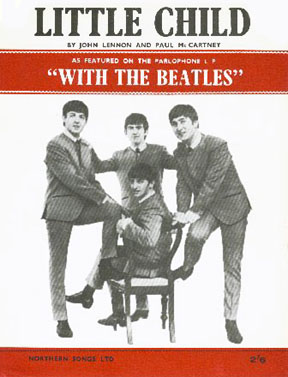 First, though, we begin with a four measure introduction, the first two measures played only by John's harmonica. McCartney's piano glissando at the end of the second measure introduces us to the full band for two additional measures. The first eight-measure verse then begins in which we hear short staccato phrases sung by John and Paul. We then hear the only actual harmony in the song, during the “I’m so sad and lonely” line, which pushes for attention as the true focal point of the whole song. First, though, we begin with a four measure introduction, the first two measures played only by John's harmonica. McCartney's piano glissando at the end of the second measure introduces us to the full band for two additional measures. The first eight-measure verse then begins in which we hear short staccato phrases sung by John and Paul. We then hear the only actual harmony in the song, during the “I’m so sad and lonely” line, which pushes for attention as the true focal point of the whole song.
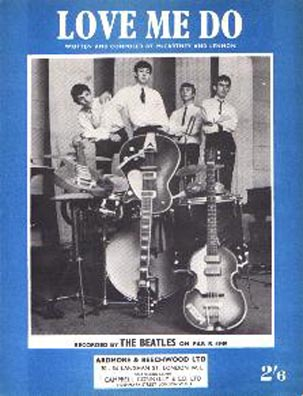 The first verse has a slightly different concluding chord pattern which is utilized in order to provide a segue into another lyrically identical verse. Unlike “Love Me Do” or “Do You Want To Know A Secret,” which both have more lengthy and intricately structured verses, “Little Child” needed to vary its verses in order to create a nice flow and avoid redundancy. The first verse has a slightly different concluding chord pattern which is utilized in order to provide a segue into another lyrically identical verse. Unlike “Love Me Do” or “Do You Want To Know A Secret,” which both have more lengthy and intricately structured verses, “Little Child” needed to vary its verses in order to create a nice flow and avoid redundancy.
After the second verse, which this time ends in the home key, the six measure bridge occurs. The three lengthier lyrical phrases that are contained in the bridge provide adequate contrast to the short phrases in the verses. We then repeat what would be considered the second verse because of its ending home chord.
 As detailed previously, the solo section occurs next, which is not played above the chord structure of either the verse or the bridge, which is standard for The Beatles, but is played above a somewhat typical twelve-bar blues pattern. This time, the solo spot features John’s harmonica. As detailed previously, the solo section occurs next, which is not played above the chord structure of either the verse or the bridge, which is standard for The Beatles, but is played above a somewhat typical twelve-bar blues pattern. This time, the solo spot features John’s harmonica.
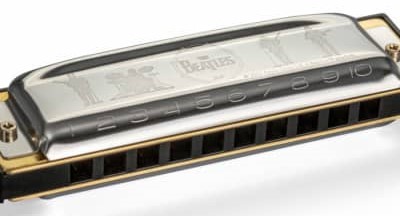 The abrupt edit catches Lennon mid-breath in his harmonica solo for him to start singing a second bridge. In order to add some variation, a new set of lyrics is heard in this bridge which is otherwise identical to the first. We then take the natural progression to a final identical verse, which is this time extended by repeating a four chord pattern accompanied by the final line “baby take a chance with me” until the song fades. The abrupt edit catches Lennon mid-breath in his harmonica solo for him to start singing a second bridge. In order to add some variation, a new set of lyrics is heard in this bridge which is otherwise identical to the first. We then take the natural progression to a final identical verse, which is this time extended by repeating a four chord pattern accompanied by the final line “baby take a chance with me” until the song fades.
 It’s apparent that the lyrics were written very quickly with the only purpose being to be used as a backdrop for an enthusiastic musical delivery. Nonetheless, they are quite worthy of interpretation here. Although on the surface it appears that the singer is just asking a girl to dance, his intentions obviously go further. He wants her to “take a chance” on him with the ultimate result of her becoming “mine, all mine.” It’s apparent that the lyrics were written very quickly with the only purpose being to be used as a backdrop for an enthusiastic musical delivery. Nonetheless, they are quite worthy of interpretation here. Although on the surface it appears that the singer is just asking a girl to dance, his intentions obviously go further. He wants her to “take a chance” on him with the ultimate result of her becoming “mine, all mine.”
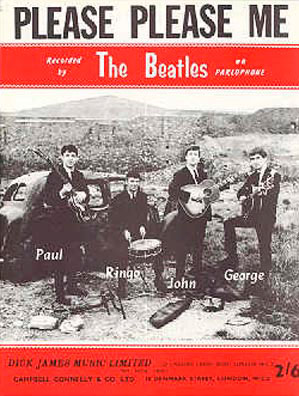 Sexual overtones are also evident, John suggesting that he’ll make her “feel so fine” when they “have some fun.” The inclusion of the lyric “c’mon, c’mon, c’mon,” as featured in the Beatles' hit “Please Please Me,” also suggest an impatient carnal proposal. This girl can be assured that she’s the “only one,” at least when she’s ‘by his side.’ While the lyrics may be viewed today as sexist, they are in actuality just an example of teenage bravado; “little child” being used here as a simple term of endearment and not pedophilia as some suggest. Sexual overtones are also evident, John suggesting that he’ll make her “feel so fine” when they “have some fun.” The inclusion of the lyric “c’mon, c’mon, c’mon,” as featured in the Beatles' hit “Please Please Me,” also suggest an impatient carnal proposal. This girl can be assured that she’s the “only one,” at least when she’s ‘by his side.’ While the lyrics may be viewed today as sexist, they are in actuality just an example of teenage bravado; “little child” being used here as a simple term of endearment and not pedophilia as some suggest.
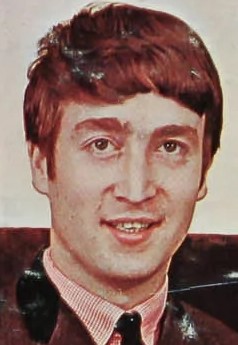 “Enthusiastic” would be the key word to use in describing the performance, which in this case is what mostly carries the song. Lennon is truly to the fore with his lead vocals which, although sung in unison with Paul throughout most of the song, is the most descernable vocal presence. It’s unfortunate that their vocal performance from the rhythm track is so unsynchronized in the bridges on the more commonly heard stereo mix. “Enthusiastic” would be the key word to use in describing the performance, which in this case is what mostly carries the song. Lennon is truly to the fore with his lead vocals which, although sung in unison with Paul throughout most of the song, is the most descernable vocal presence. It’s unfortunate that their vocal performance from the rhythm track is so unsynchronized in the bridges on the more commonly heard stereo mix.
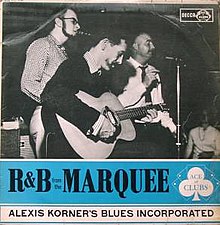 John’s harmonica work, while sloppy in spots, is performed with much confidence and enthusiasm throughout. “Throughout” is the appropriate word here because this is the only Beatles track that has Lennon playing harmonica throughout the whole song nonstop. “I’ll Get You” comes close, but its bridge is devoid of harmonica in order to provide an appropriate contrast. Not the case with “Little Child.” As far as Lennon's harmonica solo, it can be assumed that this wild spontaneous-sounding solo was a product of the full band playing to urge him on. While it made for an uncomfortable edit piece to the song, it showed Lennon in good soloist form, his inspiration reportedly being from Cyril Davies from Alexis Korner’s Blues Incorporated. John’s harmonica work, while sloppy in spots, is performed with much confidence and enthusiasm throughout. “Throughout” is the appropriate word here because this is the only Beatles track that has Lennon playing harmonica throughout the whole song nonstop. “I’ll Get You” comes close, but its bridge is devoid of harmonica in order to provide an appropriate contrast. Not the case with “Little Child.” As far as Lennon's harmonica solo, it can be assumed that this wild spontaneous-sounding solo was a product of the full band playing to urge him on. While it made for an uncomfortable edit piece to the song, it showed Lennon in good soloist form, his inspiration reportedly being from Cyril Davies from Alexis Korner’s Blues Incorporated.
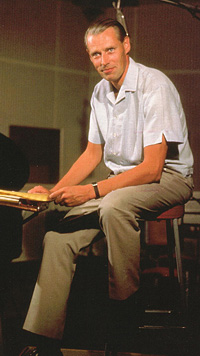 McCartney shows himself in good form as pianist on this track. From his opening glissando to his vamping during the fade, Paul shows himself as more than capable on the keyboards, even at this early stage of The Beatles recording career. George Martin, while still appearing tickling the ivories on later Beatles songs, was shown here that piano work could easily be trusted to the hands of an actual Beatle. Paul’s bass work is also proficient throughout but, as with most of this album, is barely discernable because of being buried in the mix. Paul also does very well singing in unison with John throughout the song, jumping into a higher harmony whenever the lyrics "I'm so sad and lonely" are heard in the verses as well as for a moment during the final seconds of the song. McCartney shows himself in good form as pianist on this track. From his opening glissando to his vamping during the fade, Paul shows himself as more than capable on the keyboards, even at this early stage of The Beatles recording career. George Martin, while still appearing tickling the ivories on later Beatles songs, was shown here that piano work could easily be trusted to the hands of an actual Beatle. Paul’s bass work is also proficient throughout but, as with most of this album, is barely discernable because of being buried in the mix. Paul also does very well singing in unison with John throughout the song, jumping into a higher harmony whenever the lyrics "I'm so sad and lonely" are heard in the verses as well as for a moment during the final seconds of the song.
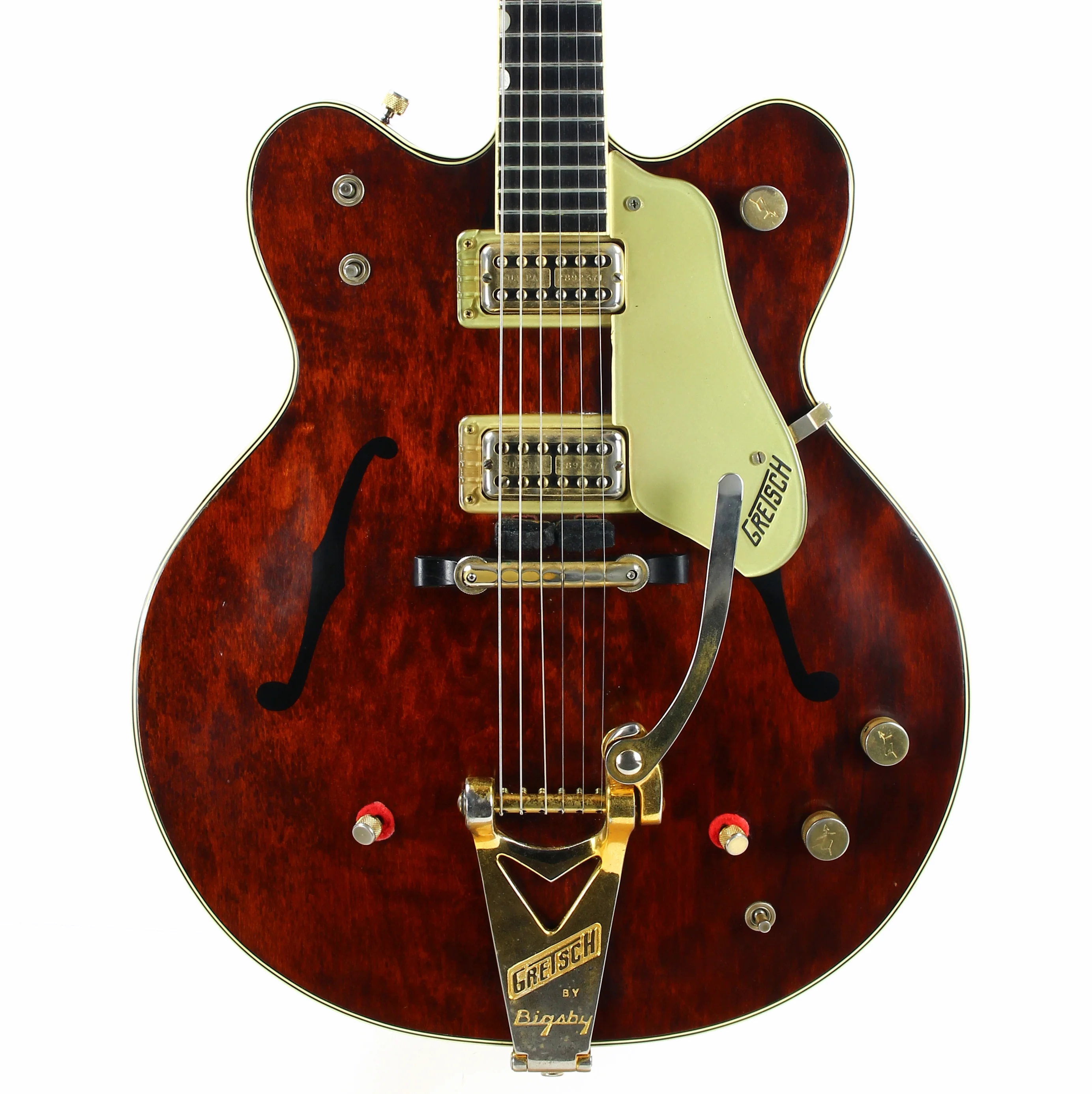 Ringo also puts in quite a commendable enthusiastic performance, maintaining his usual “beat-style” drum rhythm throughout. The only drum fill he performed, or was called for in this quick and self-contained song, was as a proper transition between the third verse and solo section. However, crank up your hearing aids to see if you can discern any trace of George’s guitar. He’s there, but so low in the mix that he may as well not have been. The harmonica and piano are the primary components of this song, therefore neither George’s nor John’s guitar can scarcely be heard at all. Ringo also puts in quite a commendable enthusiastic performance, maintaining his usual “beat-style” drum rhythm throughout. The only drum fill he performed, or was called for in this quick and self-contained song, was as a proper transition between the third verse and solo section. However, crank up your hearing aids to see if you can discern any trace of George’s guitar. He’s there, but so low in the mix that he may as well not have been. The harmonica and piano are the primary components of this song, therefore neither George’s nor John’s guitar can scarcely be heard at all.
 Capitol's "Meet The Beatles" album
|
American Releases
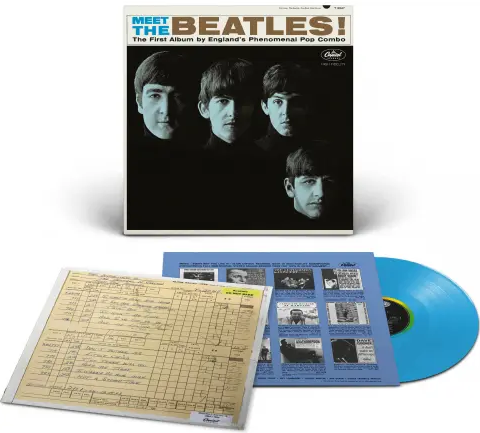 The first and only official release of “Little Child” in the '60s and '70s appears on the Capitol album “Meet The Beatles!,” released on January 20th, 1964. Incidentally, mono copies of this album contained a "Type B" foldover mix of the song created by Capitol Records that combined both channels of the stereo mix into one instead of the legitimate mono mix originally created by George Martin. This album was finally released on an individual compact disc on January 21st, 2014, both the mono and stereo mixes being contained on a single CD. A mono edition of the album on opaque blue vinyl was then released on November 22nd, 2024 for sale exclusively at Target stores. The first and only official release of “Little Child” in the '60s and '70s appears on the Capitol album “Meet The Beatles!,” released on January 20th, 1964. Incidentally, mono copies of this album contained a "Type B" foldover mix of the song created by Capitol Records that combined both channels of the stereo mix into one instead of the legitimate mono mix originally created by George Martin. This album was finally released on an individual compact disc on January 21st, 2014, both the mono and stereo mixes being contained on a single CD. A mono edition of the album on opaque blue vinyl was then released on November 22nd, 2024 for sale exclusively at Target stores.
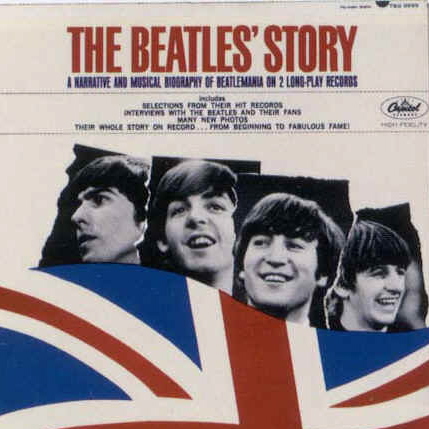 Despite the surprising occurrence of a segment of the song on the track “Beatle Medley” on the documentary double-album “The Beatles’ Story,” released on November 23rd, 1964, no compilation album throughout the years included the song. Surprisingly, "The Beatles' Story" was also released on compact disc on January 21st, 2014, but only as contained in the 13 album box set "The US Albums." Despite the surprising occurrence of a segment of the song on the track “Beatle Medley” on the documentary double-album “The Beatles’ Story,” released on November 23rd, 1964, no compilation album throughout the years included the song. Surprisingly, "The Beatles' Story" was also released on compact disc on January 21st, 2014, but only as contained in the 13 album box set "The US Albums."
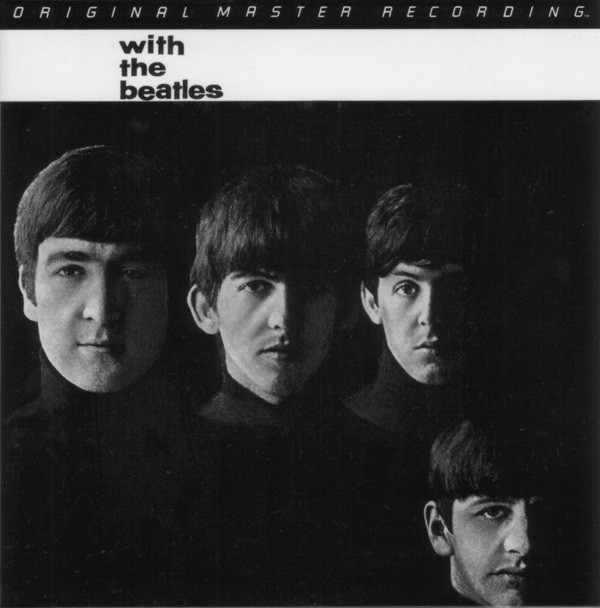 The first time the original "With The Beatles" album was made available in the US was the "Original Master Recording" vinyl edition released through Mobile Fidelity Sound Lab in January of 1987. This album marked the first time that the official mono version of "Little Child" was available in the US. This new album was prepared utilizing half-speed mastering technology from the original master tape on loan from Abbey Road studios. There was only a limited production of this album, reportedly because of a damaged metal part that was needed for pressing the vinyl. Therefore, this album is said to be the rarest and most valuable Beatles album in the “Original Master Recording” series. The first time the original "With The Beatles" album was made available in the US was the "Original Master Recording" vinyl edition released through Mobile Fidelity Sound Lab in January of 1987. This album marked the first time that the official mono version of "Little Child" was available in the US. This new album was prepared utilizing half-speed mastering technology from the original master tape on loan from Abbey Road studios. There was only a limited production of this album, reportedly because of a damaged metal part that was needed for pressing the vinyl. Therefore, this album is said to be the rarest and most valuable Beatles album in the “Original Master Recording” series.
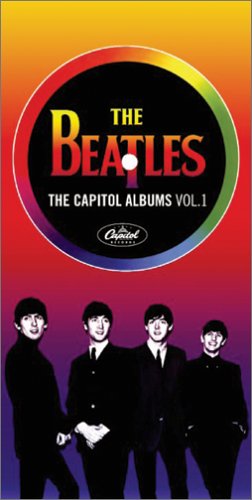 February 26th, 1987 saw the mono release of the original British "With The Beatles" album on compact disc, a vinyl edition being released on July 21st, 1987. The stereo version of the song became available on the remastered CD edition released on September 9th, 2009, the vinyl version coming out on November 13th, 2012. February 26th, 1987 saw the mono release of the original British "With The Beatles" album on compact disc, a vinyl edition being released on July 21st, 1987. The stereo version of the song became available on the remastered CD edition released on September 9th, 2009, the vinyl version coming out on November 13th, 2012.
Also, the box set “The Capitol Albums, Vol. 1,” which was released on November 15th, 2004, contains both the stereo and "Type B" foldover mono versions of the song as heard on the original "Meet The Beatles!" album.
September 9th, 2009 was the release date of the CD box set “The Beatles In Mono” which contains the newly remastered mono version of "Little Child." The vinyl edition of this box set was first released on September 9th, 2014.
Live Performances
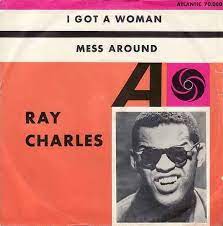 Apart from Beatles tribute bands, the song has never seen the light of day on the performance stage. No doubt it would have had a performance life if Ringo had sung lead vocals as intended. This can be seen by the inclusion of its replacement song “I Wanna Be Your Man” in their stage act for some time after the release of the album. Neither McCartney nor Lennon ever thought of including “Little Child” in their solo performance careers to date. As far as BBC radio performances, The Beatles preferred featuring unreleased favorites of theirs during this time, such as “Sure To Fall” and “I Got A Woman,” over performing “Little Child.” Apart from Beatles tribute bands, the song has never seen the light of day on the performance stage. No doubt it would have had a performance life if Ringo had sung lead vocals as intended. This can be seen by the inclusion of its replacement song “I Wanna Be Your Man” in their stage act for some time after the release of the album. Neither McCartney nor Lennon ever thought of including “Little Child” in their solo performance careers to date. As far as BBC radio performances, The Beatles preferred featuring unreleased favorites of theirs during this time, such as “Sure To Fall” and “I Got A Woman,” over performing “Little Child.”
Conclusion
 While “Little Child” has never been considered to be anyone’s favorite Beatles song, nor has it received much radio airplay throughout the decades apart from “A to Z” shows, the song stands as a testament to Lennon and McCartney’s abilities as songwriters. They could crank out a hummable and exciting song "made-to-order" if needed, even amid an excruciating touring and recording schedule. Indeed, they could crank out a handful of these songs at a time if necessary, as they had in this instance. While “Little Child” has never been considered to be anyone’s favorite Beatles song, nor has it received much radio airplay throughout the decades apart from “A to Z” shows, the song stands as a testament to Lennon and McCartney’s abilities as songwriters. They could crank out a hummable and exciting song "made-to-order" if needed, even amid an excruciating touring and recording schedule. Indeed, they could crank out a handful of these songs at a time if necessary, as they had in this instance.
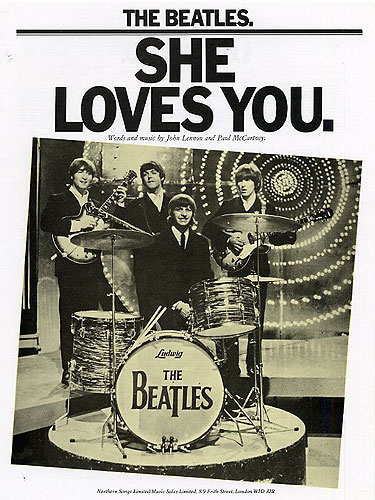 What is to be admired is that The Beatles viewed songwriting very seriously, whether if it was for financial gain in churning out songs as a means to an end, or in laboring over a tune to perfect a pop masterpiece as they had done with “She Loves You” and “I Want To Hold Your Hand” during this period. This was their chosen profession, and they worked at it with real vigor and enthusiasm. What is to be admired is that The Beatles viewed songwriting very seriously, whether if it was for financial gain in churning out songs as a means to an end, or in laboring over a tune to perfect a pop masterpiece as they had done with “She Loves You” and “I Want To Hold Your Hand” during this period. This was their chosen profession, and they worked at it with real vigor and enthusiasm.
It is an obvious understatement to say that great improvement was well on its way for the Lennon / McCartney songwriting team in the future. It’s equally unfair to say that “Little Child” makes The Beatles sound like "tired hacks" as some sources claim. One thing that can be said is that, although this song is not a prime example of what Lennon and McCartney were capable of, The Beatles could summon up a great deal of enthusiasm to pump up a song of any caliber to create a potboiler of a rocker which fits nicely within the framework of the “Meet The Beatles!” album.
Song Summary
"Little Child”
Written by: John Lennon / Paul McCartney
- Song Written: September 1963
- Song Recorded: September 12 & October 3, 1963
- First US Release Date: January 20, 1964
- First US Album Release: Capitol #ST-2047 “Meet The Beatles!”
- US Single Release: n/a
- Highest Chart Position: n/a
- British Album Release: Parlophone #PCS 3045 “With The Beatles”
- Length: 1:48
- Key: E major
- Producer: George Martin
- Engineers: Norman Smith, Richard Langham
Instrumentation (most likely):
- John Lennon – Lead Vocals, Rhythm Guitar (1958 Rickenbacker 325), Harmonica (Hohner Chromatic)
- Paul McCartney - Lead and Harmony Vocals, Bass Guitar (1961 Hofner 500/1), Piano (1905 Steinway Vertegrand upright)
- George Harrison – Rhythm Guitar (1962 Gretsch 6122 Country Gentleman)
- Ringo Starr – Drums (1963 Ludwig Downbeat Black Oyster Pearl)
Written and compiled by Dave Rybaczewski
|
IF YOU WOULD LIKE TO MAKE A DONATION TO KEEP THIS WEBSITE UP AND RUNNING, PLEASE CLICK BELOW!
Sign Up Below for our MONTHLY BEATLES TRIVIA QUIZ!
|